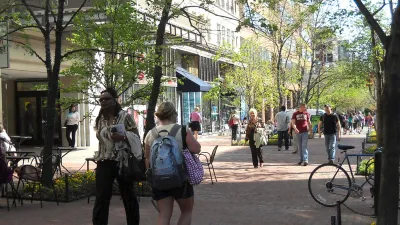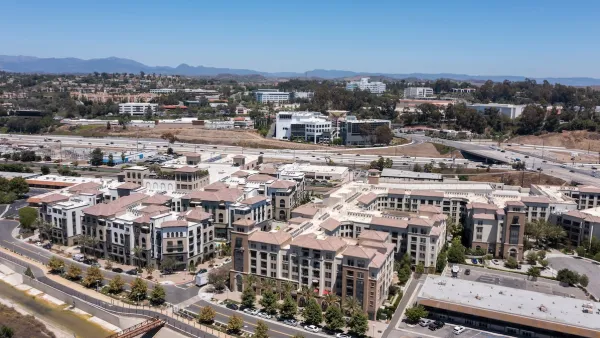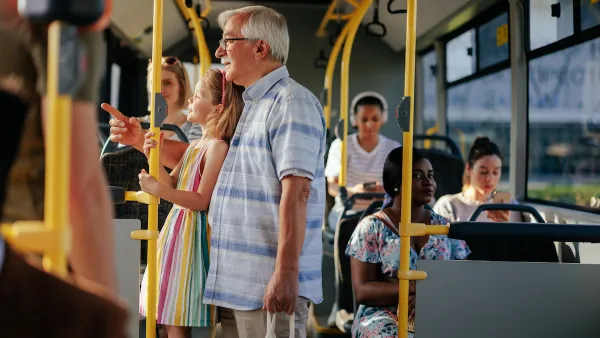New research indicates that improving public health requires targeted investments in more than just pedestrian facilities.

Nikita Amir reports on a recent study of public health outcomes from the MAP Center for Urban Health Solutions at St. Michael's Hospital in Toronto which reveals that "walkability isn’t just restricted to elements of infrastructure—it’s also mediated by racial injustice, food supply, and pollution."
The study's authors evaluated existing research linking physical activity and disease "to understand how a resident’s ability to walk around their neighborhoods is linked to the likelihood of obesity and diabetes," writes Amir. Gillian Booth, a scientist at the MAP Center for Urban Health Solutions at St. Michael’s Hospital in Toronto, Canada, and her co-author Nicholas Howell created a "walkability index" that combined a variety of factors that affect whether residents of an area can safely walk around their neighborhood and access businesses and transit.
The researchers found that public health metrics varied across neighborhoods, and that pedestrian infrastructure (such as sidewalks) alone don't indicate a healthier neighborhood.
"For example, Booth and her co-author learned that in places with higher air pollution or traffic congestion, it wasn’t as beneficial to be able to stroll around as in cleaner, quieter neighborhoods. In the more polluted areas, residents had a higher risk of illnesses such as heart disease or dementia. In essence, any gains made by being able to walk around the neighborhood were washed away by the increased concentration of fuel emissions in the air."
Additionally, "Factors like food apartheids with a lack of healthy eating options or access to green spaces can also be traced to systemic social and racial inequities. Many low-income communities live in places that have been intentionally designed without walkability or abundant resources like parks and grocery stores in mind." The study's authors acknowledge the limitations of their research, which often didn't include socioeconomic factors.
The study could play a role in figuring out how cities can design healthy, sustainable infrastructure that addresses public health from all angles including walkability, air quality, stormwater management, open space, and transportation.
FULL STORY: Walkability won't solve neighborhood health inequities

Analysis: Cybertruck Fatality Rate Far Exceeds That of Ford Pinto
The Tesla Cybertruck was recalled seven times last year.

National Parks Layoffs Will Cause Communities to Lose Billions
Thousands of essential park workers were laid off this week, just before the busy spring break season.

Retro-silient?: America’s First “Eco-burb,” The Woodlands Turns 50
A master-planned community north of Houston offers lessons on green infrastructure and resilient design, but falls short of its founder’s lofty affordability and walkability goals.

Test News Post 1
This is a summary

Analysis: Cybertruck Fatality Rate Far Exceeds That of Ford Pinto
The Tesla Cybertruck was recalled seven times last year.

Test News Headline 46
Test for the image on the front page.
Urban Design for Planners 1: Software Tools
This six-course series explores essential urban design concepts using open source software and equips planners with the tools they need to participate fully in the urban design process.
Planning for Universal Design
Learn the tools for implementing Universal Design in planning regulations.
EMC Planning Group, Inc.
Planetizen
Planetizen
Mpact (formerly Rail~Volution)
Great Falls Development Authority, Inc.
HUDs Office of Policy Development and Research
NYU Wagner Graduate School of Public Service




























